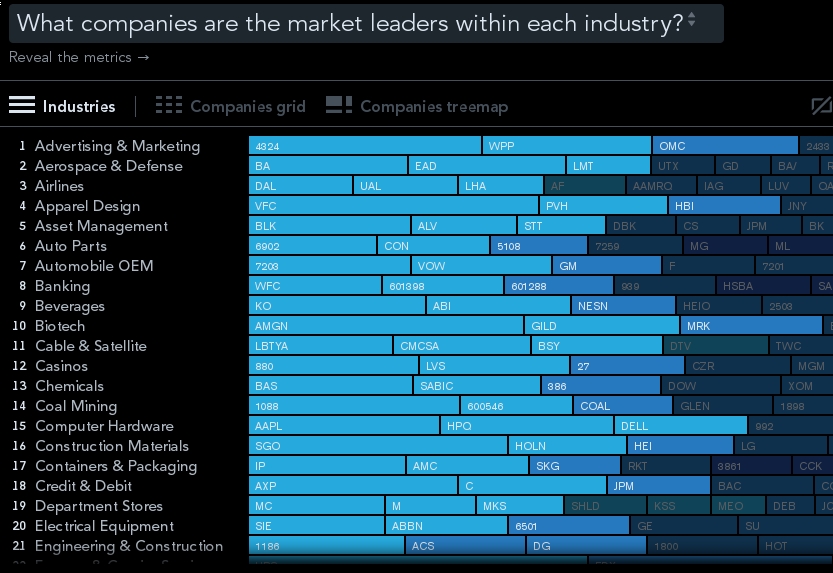RANDOM POSTs
-
The Forbidden colors – Red-Green & Blue-Yellow: The Stunning Colors You Can’t See
Read more: The Forbidden colors – Red-Green & Blue-Yellow: The Stunning Colors You Can’t Seewww.livescience.com/17948-red-green-blue-yellow-stunning-colors.html

While the human eye has red, green, and blue-sensing cones, those cones are cross-wired in the retina to produce a luminance channel plus a red-green and a blue-yellow channel, and it’s data in that color space (known technically as “LAB”) that goes to the brain. That’s why we can’t perceive a reddish-green or a yellowish-blue, whereas such colors can be represented in the RGB color space used by digital cameras.
https://en.rockcontent.com/blog/the-use-of-yellow-in-data-design
The back of the retina is covered in light-sensitive neurons known as cone cells and rod cells. There are three types of cone cells, each sensitive to different ranges of light. These ranges overlap, but for convenience the cones are referred to as blue (short-wavelength), green (medium-wavelength), and red (long-wavelength). The rod cells are primarily used in low-light situations, so we’ll ignore those for now.
When light enters the eye and hits the cone cells, the cones get excited and send signals to the brain through the visual cortex. Different wavelengths of light excite different combinations of cones to varying levels, which generates our perception of color. You can see that the red cones are most sensitive to light, and the blue cones are least sensitive. The sensitivity of green and red cones overlaps for most of the visible spectrum.

Here’s how your brain takes the signals of light intensity from the cones and turns it into color information. To see red or green, your brain finds the difference between the levels of excitement in your red and green cones. This is the red-green channel.
To get “brightness,” your brain combines the excitement of your red and green cones. This creates the luminance, or black-white, channel. To see yellow or blue, your brain then finds the difference between this luminance signal and the excitement of your blue cones. This is the yellow-blue channel.
From the calculations made in the brain along those three channels, we get four basic colors: blue, green, yellow, and red. Seeing blue is what you experience when low-wavelength light excites the blue cones more than the green and red.
Seeing green happens when light excites the green cones more than the red cones. Seeing red happens when only the red cones are excited by high-wavelength light.
Here’s where it gets interesting. Seeing yellow is what happens when BOTH the green AND red cones are highly excited near their peak sensitivity. This is the biggest collective excitement that your cones ever have, aside from seeing pure white.
Notice that yellow occurs at peak intensity in the graph to the right. Further, the lens and cornea of the eye happen to block shorter wavelengths, reducing sensitivity to blue and violet light.
-
AI image generators could be their own demise due to inbreeding
Read more: AI image generators could be their own demise due to inbreedingA paper by computer scientists Matyas Bohacek and Hany Farid with the catchy title ‘Nepotistically Trained Generative-AI Models Collapse‘ shows that training AI image generators on AI images quite quickly leads to a deterioration in the quality of output. Farid likened the phenomenon to inbreeding. “If a species inbreeds with their own offspring and doesn’t diversify their gene pool, it can lead to a collapse of the species,” he said.
https://www.creativebloq.com/ai/ai-art/research-shows-ai-image-generators-could-be-their-own-demise
https://arxiv.org/pdf/2311.12202
-
Apple reaches deal to acquire Pixelmator
Read more: Apple reaches deal to acquire Pixelmatorhttps://9to5mac.com/2024/11/01/apple-reaches-deal-to-acquire-pixelmator
Pixelmator has signed an agreement to be acquired by Apple, subject to regulatory approval. There will be no material changes to the Pixelmator Pro, Pixelmator for iOS, and Photomator apps at this time.
https://www.pixelmator.com/pro/
-
Mike Wong – AtoMeow – A Blue noise image stippling in Processing
Read more: Mike Wong – AtoMeow – A Blue noise image stippling in Processing
https://github.com/mwkm/atoMeow
https://www.shadertoy.com/view/7s3XzX
This demo is created for coders who are familiar with this awesome creative coding platform. You may quickly modify the code to work for video or to stipple your own Procssing drawings by turning them into
PImageand run the simulation. This demo code also serves as a reference implementation of my article Blue noise sampling using an N-body simulation-based method. If you are interested in 2.5D, you may mod the code to achieve what I discussed in this artist friendly article.Convert your video to a dotted noise.
-
Foundry and Luxology Merge
Read more: Foundry and Luxology MergeThe Foundry (Nuke, Mari, Katana) today announced it has merged with Luxology (Modo)
http://www.fxguide.com/featured/foundry-and-luxology-merge-fxg-exclusive/
-
AI and the Law – TV/Theatrical 2023 – SAG-AFTRA Contract and Regulating AI
Read more: AI and the Law – TV/Theatrical 2023 – SAG-AFTRA Contract and Regulating AIhttps://www.sagaftra.org/files/sa_documents/AI%20TVTH.pdf
https://www.sagaftra.org/files/sa_documents/TV-Theatrical_23_Summary_Agreement_Final.pdf
Mike Seymour : A Deep Dive into the New Laws around Governing AI
https://www.fxguide.com/fxpodcasts/fxpodcast-361-a-deep-dive-into-the-new-laws-around-governing-ai/Local copies
Studios Align With Big Tech in a Risky Bet
Under U.S. copyright law, directors and writers are not entitled to some rights that exist in other countries, including the U.K., France and Italy. This is because the contributions of writers and directors in America are typically considered “works-made-for-hire,” which establishes creators as employees and producers as the owner of any copyright.
COLLECTIONS
| Featured AI
| Design And Composition
| Explore posts
POPULAR SEARCHES
unreal | pipeline | virtual production | free | learn | photoshop | 360 | macro | google | nvidia | resolution | open source | hdri | real-time | photography basics | nuke
FEATURED POSTS
Social Links
DISCLAIMER – Links and images on this website may be protected by the respective owners’ copyright. All data submitted by users through this site shall be treated as freely available to share.









